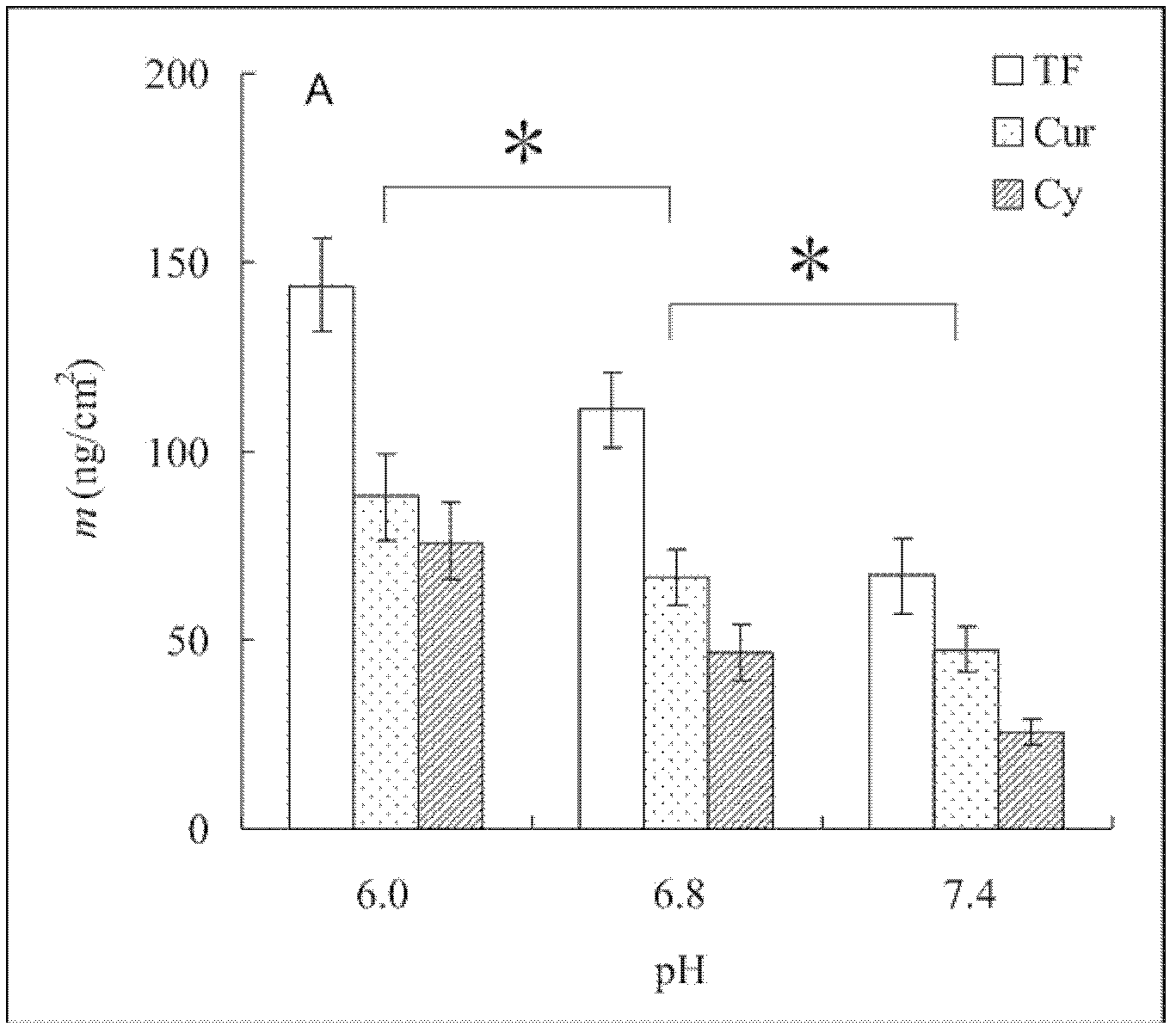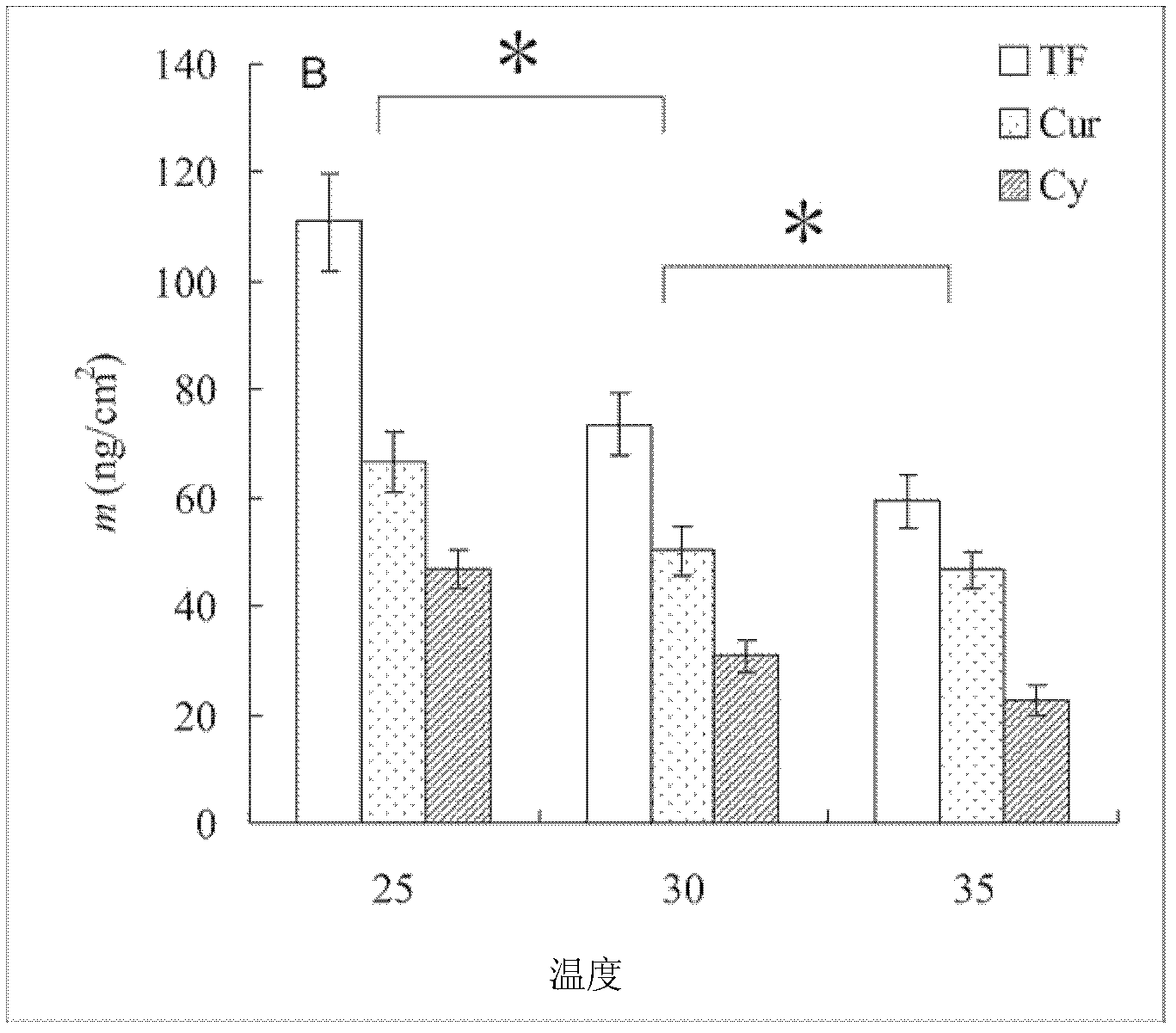Molecular biological model for eliminating oral pigment biofilm with protease and preparation method thereof
A molecular biology and biofilm technology, which is applied in biochemical equipment and methods, microbial determination/inspection, biological testing, etc. Effect
- Summary
- Abstract
- Description
- Claims
- Application Information
AI Technical Summary
Problems solved by technology
Method used
Image
Examples
Embodiment 1
[0031] Embodiment 1, QCM-D chip
[0032] 1. Self-assembled protein film: pass through 1ml of 10mM 11-mercapto-11 alkanoic acid solution to activate the chip for 10 minutes; then add 1 mL of 0.2M EDC and 0.1M NHS mixed solution with a volume ratio of 1:1 to activate the QCM-D chip for 10 minutes . Inject 1mL of protein solution until the adsorption reaches a steady state. The protein is human saliva, and then inject 1mL of 1M ethanolamine hydrochloric acid solution with pH 8.5, and keep it closed for 10min. Ethanolamine blocks nonspecific binding sites on protein surfaces. Ethanolamine was drained and a solution of 20 mM hydrochloric acid pH 2.0 was passed through to remove non-specifically bound proteins. So far, a biofilm assembled by protein membranes (such as saliva) has formed on the surface of the activated chip.
[0033] 2. Formation of pigment-saliva biofilm: Before the pigment is passed, the buffer is continuously passed. Under the conditions of 25°C, pH 7.0, and i...
Embodiment 2
[0039] Embodiment 2, QCM-D chip
[0040] 1. Self-assembled protein film: pass through 1ml of 8mM 11-mercapto-11 alkanoic acid solution to activate the chip for 12min; then pass through 1mL of a mixed solution of 0.2M EDC and 0.1M NHS with a volume ratio of 2:1 to activate the QCM-D chip 10min. Inject 1mL of protein solution until the adsorption reaches a steady state, the protein is human saliva, and then inject 1mL of 1.2M ethanolamine hydrochloric acid solution with pH 8.0, and keep it closed for 10min. Ethanolamine blocks nonspecific binding sites on protein surfaces. Ethanolamine was drained and a solution of 20 mM hydrochloric acid pH 2.0 was passed through to remove non-specifically bound proteins. So far, a biofilm assembled by protein membranes (such as saliva) has formed on the surface of the activated chip.
[0041] 2. Formation of pigment-saliva biofilm: Before the pigment is passed, the buffer is continuously passed. Under the conditions of 25°C, pH 7.0, and io...
Embodiment 3
[0046] Embodiment 3 SPR chip
[0047] 1. Self-assembled protein film: pass through 1ml of 12mM 11-mercapto-11alkanoic acid solution to activate the chip for 8 minutes; then pass through 1mL of a mixed solution of 0.3M EDC and 0.15M NHS with a volume ratio of 1:2 to activate the SPR chip for 10 minutes. Inject 1mL of protein solution until the adsorption reaches a steady state. The protein is artificially synthesized saliva, and then inject 1mL of 1M ethanolamine hydrochloric acid solution with pH 8.5, and keep blocking for 10min. Ethanolamine was drained and a solution of 20 mM hydrochloric acid pH 2.0 was passed through to remove non-specifically bound proteins. So far, a biofilm assembled by protein membranes (such as saliva) has formed on the surface of the activated chip.
[0048] 2. Formation of pigment-saliva biofilm: Before the pigment is passed, the buffer is continuously passed. Under the conditions of 25°C, pH 7.0, and ionic strength of 10mM PBST, inject the theafl...
PUM
 Login to View More
Login to View More Abstract
Description
Claims
Application Information
 Login to View More
Login to View More - R&D
- Intellectual Property
- Life Sciences
- Materials
- Tech Scout
- Unparalleled Data Quality
- Higher Quality Content
- 60% Fewer Hallucinations
Browse by: Latest US Patents, China's latest patents, Technical Efficacy Thesaurus, Application Domain, Technology Topic, Popular Technical Reports.
© 2025 PatSnap. All rights reserved.Legal|Privacy policy|Modern Slavery Act Transparency Statement|Sitemap|About US| Contact US: help@patsnap.com



